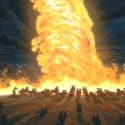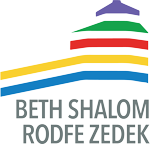
Parashat Vayakhel-Pekudei: What creates a meaningful existence?
<Great thanks to Henry B. Resnikoff, who has written the wonderful preview below, and who will be leading Scrollers this Shabbat.>
“The Sabbath is the presence of G-d in the world, open to the soul of man.” G-d is not in things of space, but in moments of time.” ― Abraham Joshua Heschel, The Sabbath
With thanks to Rabbi Bellows, Sean and David for their priceless input and critique.
The Sabbath:
a. Genesis II v 3
b. Yitro XX 8 – 10
c. Ki Tisa XXXI 12 – 18
d. Vayakhel (Exodus 35 1:3)
For years we have read the parshiyot Vayakhel & Pekudei (Exodus 35:1-38:20) focused on the vivid detail that G-d has commanded Moses to have the Mishkan and the priests’ vestments constructed fabricated.
We have acted out the construction; debated what is a cubit; wondered where did all this material for the Mishkan come from; pondered why G-d named two individuals unlike virtually every other parsha and otherwise felt perplexed why such minute instructions and detail. We have answered with the notions of obedience, faith and fulfillment of the people’s side of the Covenantal bargain.
This year I would like to pose a different set of questions.
The question is about the role of the Sabbath.
The parsha Vayakhel opens with an admonition not to kindle fire. The portion Pekudei ends with the picture of G-d being a pillar of fire. And both harken back to Yitro XIX 18 when G-d descended the mountain as fire. This is one of two admonition of what not to do on the Sabbath. Nowhere else in Torah do we find specificity as to the “don’ts” that all comes later in Jewish history. And yet these parshiyot are filled with detail how to build physical objects? Why don’t we get such detail how to celebrate the Sabbath other than observe, cease work, don’t light fires and don’t cut wood?
What intrigued me is why does the parsha open such powerful verses reminding the people of their obligation to observe the Sabbath. Foremost a reiteration of Yitro XX 8 – 10 a reminder that a violation of the Sabbath is punishable by death (v. 2) and a reminder not to kindle any fire on the Sabbath (v. 3).
The parsha then plunges into the instructions of the building of the Mishkan in extraordinary detail.
So why are these three verses here? Why do the people have to be reminded of the importance of the Sabbath before undertaking what is seemingly a holy task?
This lead to me pondering that the preamble to this parsha is an opening to the question of what is a meaningful life? Does G-d have Moses include this preamble to ask people to think about their lives? Does it mean that the Shabbat is not just a day of rest from daily human labor but a day opened to contemplation, to enquiry, to searching about the meaning of what our actions mean, what our inactions mean. What does it mean to not participate in daily tasks?
This lead to the questions, which I think are bound up in the instructions of the construction of the Mishkan, of understanding what is a meaningful existence? Is it following G-d’s instructions to the letter of the law? Is it participating at whatever level one can freely and openly bringing gifts not just for the construction of the Mishkan but gifts to the community, caring, menschkeit, morals, ethics and leadership?
And how do we know we are leading a meaningful life? How can we recognize what we are doing is satisfactory to G-d and to ourselves and to our community?
Constructing the Mishkan, following specific instructions is actually an easy task. It might entail a great deal of physical labor and mental acuity to focus on the fulfilling the detail but by providing the detail it also allows no room for thinking, for creativity and in fact, it is a way of reducing the anxiety about daily living. No decision needs to be made. Simply follow directions and all will be good. I have found in life how easy it is to focus on finding solutions to problems rather than dwelling in the uncertainty of the problem seeking to avoid the anxiety or emotion of the problem.
Thus, I think G-d opens this parsha with a reminder that the Shabbat is a time to focus on the vastness of our universe, and to contemplate our lives and greater consciousness, rather than lighting fires or working.
The companion parasha Pekudei ends (XL 38) with the description “For the cloud of the Lord was upon the tabernacle by day, and there was a fire therein by night, in sight of all the house of Israel, throughout all their journeys”.
Thus we are shown G-d as a form of fire to deliver the Tablets of the Commandments and a symbol so the people will always know G-d is present in some form. Yet the people are specifically prohibited from kindling fire on the Sabbath. Did G-d ever move the people on the Sabbath? Did people become anxious looking for the fire as evening set? What if the fire were not there? Did that mean G-d had abandoned the people? Is the admonition not to kindle a fire a reminder not to lose faith akin to the building of the Golden Calf when there was a fear Moses was gone and the people needed a symbol?
Obviously one can easily argue that every parsha is filled with some message to search for and find ways to lead a meaningful life. I am not suggesting these two are unquiet with that message. But the words, the ideas, the contrasts in these two parshas give me pause to contemplate the meaning of Shabbat and the way to fulfill the commandment to have purpose and meaning to life.
I look forward to wrestling with these words and ideas with you.
(Additional note from Rabbi Bellows: this week’s Haftarah portion is a special one, for Shabbat HaChodesh, and it can be found at Ezekiel 45:16-46:18)





